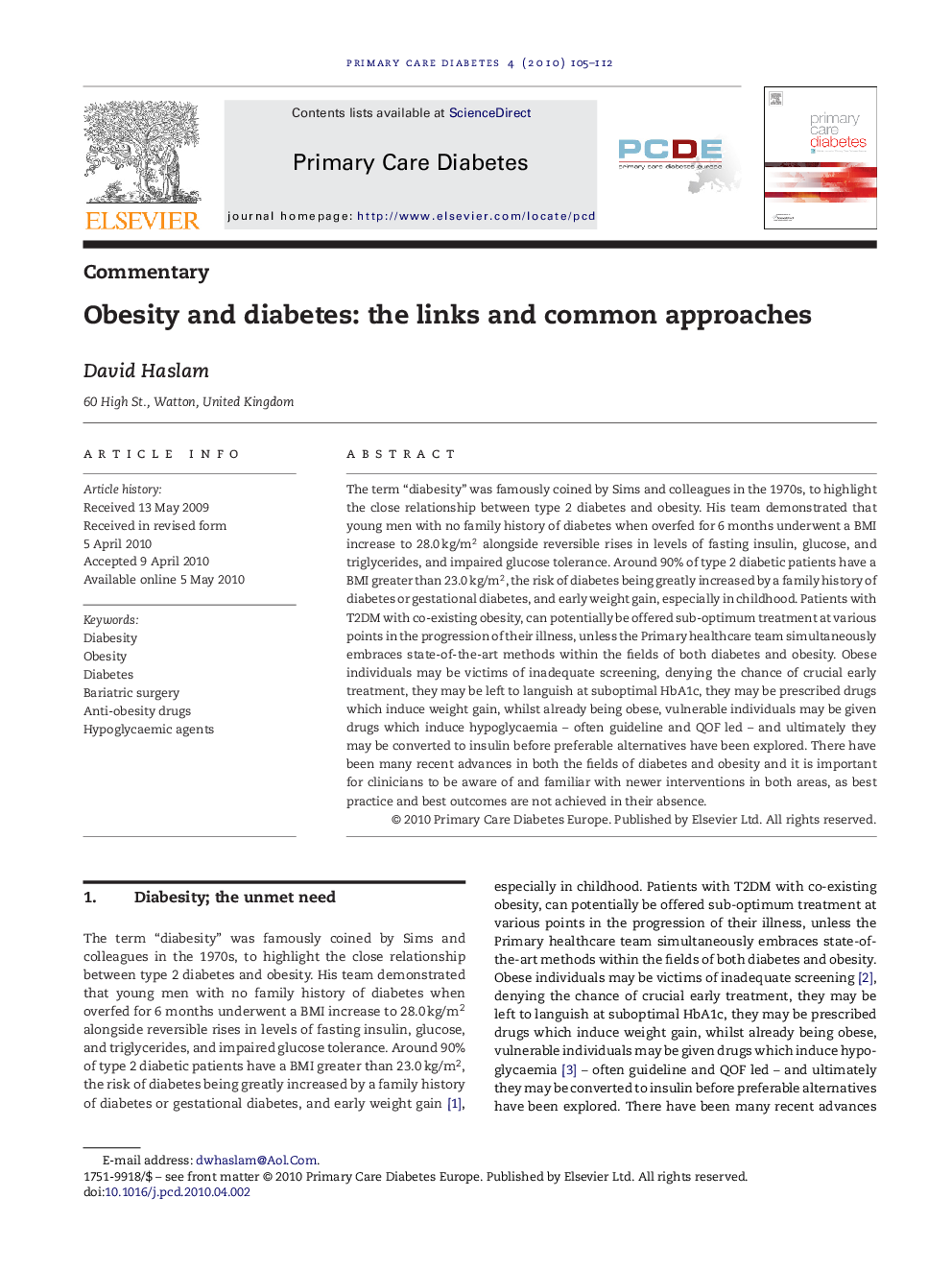| Article ID | Journal | Published Year | Pages | File Type |
|---|---|---|---|---|
| 2679162 | Primary Care Diabetes | 2010 | 8 Pages |
The term “diabesity” was famously coined by Sims and colleagues in the 1970s, to highlight the close relationship between type 2 diabetes and obesity. His team demonstrated that young men with no family history of diabetes when overfed for 6 months underwent a BMI increase to 28.0 kg/m2 alongside reversible rises in levels of fasting insulin, glucose, and triglycerides, and impaired glucose tolerance. Around 90% of type 2 diabetic patients have a BMI greater than 23.0 kg/m2, the risk of diabetes being greatly increased by a family history of diabetes or gestational diabetes, and early weight gain, especially in childhood. Patients with T2DM with co-existing obesity, can potentially be offered sub-optimum treatment at various points in the progression of their illness, unless the Primary healthcare team simultaneously embraces state-of-the-art methods within the fields of both diabetes and obesity. Obese individuals may be victims of inadequate screening, denying the chance of crucial early treatment, they may be left to languish at suboptimal HbA1c, they may be prescribed drugs which induce weight gain, whilst already being obese, vulnerable individuals may be given drugs which induce hypoglycaemia – often guideline and QOF led – and ultimately they may be converted to insulin before preferable alternatives have been explored. There have been many recent advances in both the fields of diabetes and obesity and it is important for clinicians to be aware of and familiar with newer interventions in both areas, as best practice and best outcomes are not achieved in their absence.
